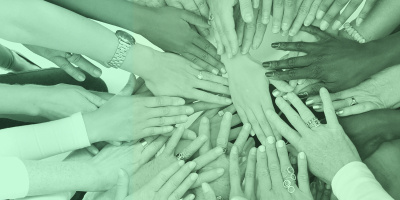_Addressing harassment and bullying in the workplace_
By Mariam Ibrahim, Communications Staff
When people think about bullying, they probably envision a mean student picking on other kids in the schoolyard.
But the truth is bullying and harassment aren’t limited to the school setting, and it doesn’t just happen among children.
AUPE’s Occupational Health and Safety Committee is planning a series of bulletins posted at worksites across the province to help educate members about their rights at work and what to do if they feel unsafe. A forthcoming bulletin will have a specific focus on harassment and bullying.
Occupational health and safety is usually associated with regulations designed to keep workers from being injured or killed on the job.
But it’s equally important to ensure everyone is able to work in an environment that is safe and free from any harassment and bullying. In fact, says AUPE vice-president Erez Raz, workplace harassment and bullying is becoming an issue members are growing increasingly concerned about.
A study by the Canadian Safety Council found at least 37 per cent of all workers have experienced bullying in the workplace, and more than half those targets are women.
“Workplace harassment and bullying is a serious issue and one that deserves our attention,” said Raz, who chairs AUPE’s OHS committee. “When workers feel targeted, harassed or bullied, it causes psychological harm and contributes to an unsafe workplace culture and low employee morale.”
So what exactly constitutes harassment in the workplace? Generally, it is understood as a pattern of behaviour intended to intimidate, threaten or humiliate a person or a group of people. It can come in many forms, including verbal or written interactions, but can also include rumours and innuendo spread by the bully to other people in the workplace.
It can include threats of or actual physical violence, but more often than not, it tends to come in the form of psychological harm.
But what it doesn’t include is the enforcement of company policies, constructive feedback or employee evaluations.
As awareness about workplace harassment and bullying grows across the province, AUPE vice-president Carrie-Lynn Rusznak says she is hopeful it will help change the culture around the issue.
“Ultimately, the way to eradicate this all-too-common problem is through education and advocacy,” said Rusznak, who chairs the human rights committee. “Everyone deserves to go to work in an environment that is safe and free from any harassment.”
One of the most important things for workers to do if they feel they’re experiencing harassment in the workplace is to find out if the workplace has a policy in force to deal with it, says Raz.
But if a policy isn’t in place, it’s crucial workers keep a record of events that details the date, time and place of the harassment, whether there were any witnesses present and what happened afterward.
It’s equally important to keep copies of any harassing emails, texts or other correspondence sent by a bully.
Documentation is helpful when it comes to reporting the harassing behaviour to a supervisor and your AUPE Membership Services Officer.
“If members believe they’ve become a bully’s target, keeping a record is one of the best ways to have the situation resolved,” Raz said. “Without a record it can be difficult to identify the objectionable behaviour, and for the employer to deal with it appropriately.”


